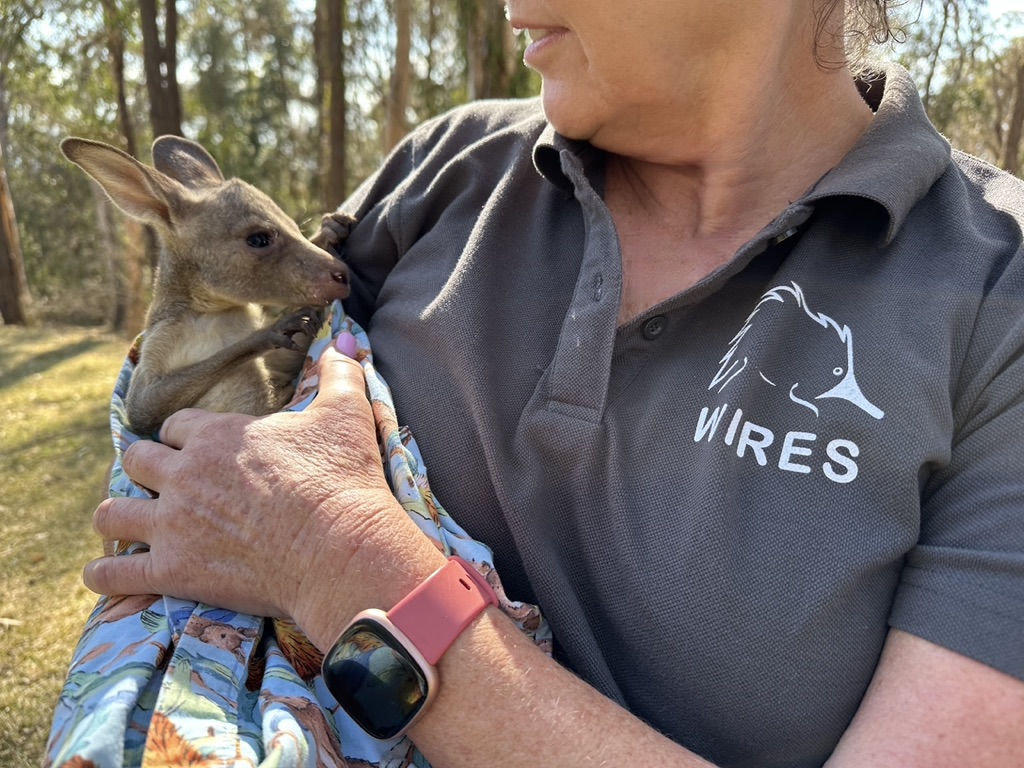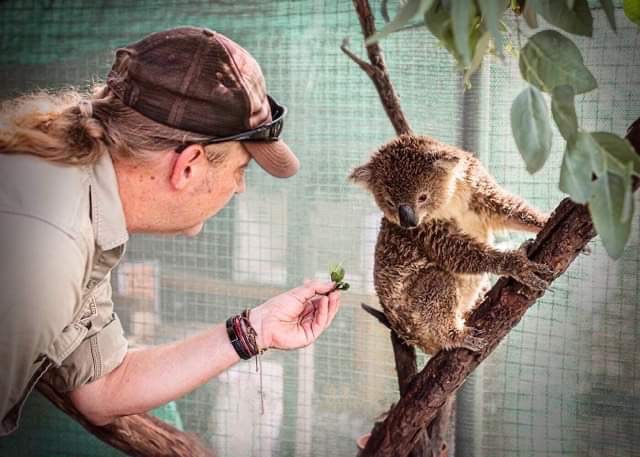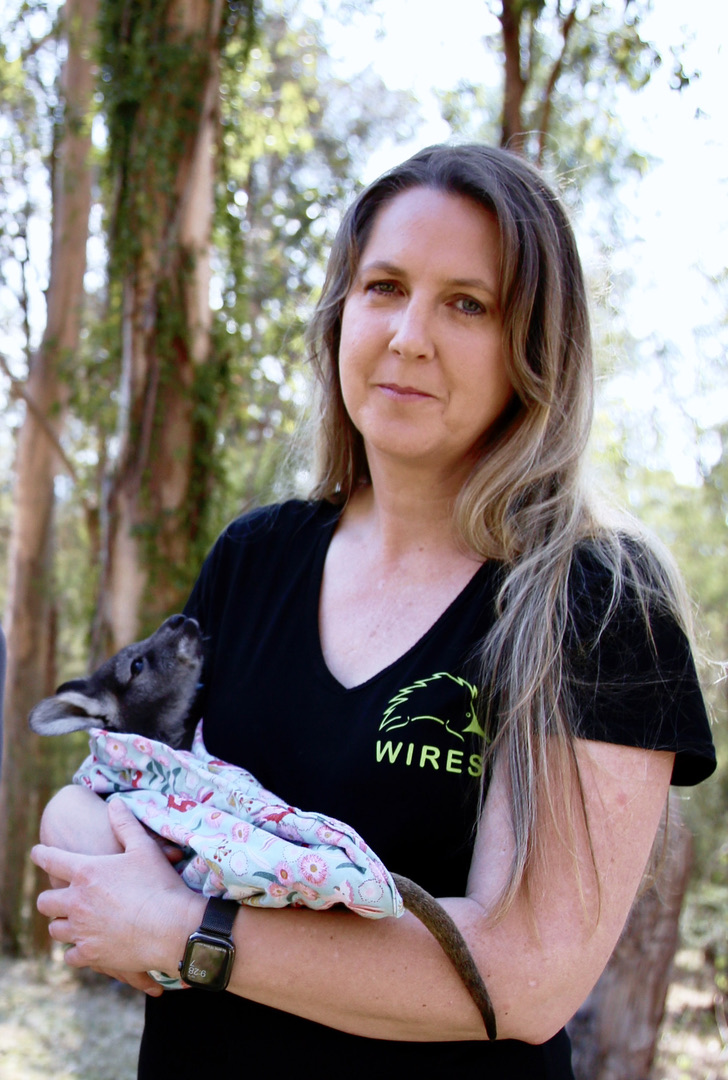
Why become a wildlife carer?
Tuesday, June 4, 2024
“My personal journey began in 2016 when I witnessed a kangaroo hit by a car near my home. She passed quickly but I could see a joey in her pouch. I thought oh my goodness - I need to learn what to do! Since then our Mid-South Coast branch has assisted over 300 different species. And every year we tend to more and more rescues. In 2017 we attended under 1,000 – last year it was 3,187.” WIRES carer Rachel.
Wildlife Rescue organizations across Australia rely on trained volunteers to help us rescue and rehabilitate injured and orphaned native animals; and prepare them for life back in the wild.
In rural areas, we have such a beautiful array of native wildlife, but the combined impacts of busy roads and small communities spread across vast distances, can make the work of wildlife carers particularly challenging.
This means in communities like Dubbo (which tragically has the worst animal collision rate in Australia) we need significantly more wildlife loving people to step up, train up and join us in rescuing and rehabilitating injured wildlife!
Our WIRES Dubbo Branch is actively seeking new members right now – and has a special rescue workshop on Saturday 6th July so people can complete their training and become a WIRES wildlife carer.
How do I begin?
To be a wildlife carer in NSW you need to be trained and registered with a licensed organization that has the authority to rescue and rehabilitate wildlife in your area.
WIRES is licensed to rehabilitate injured, sick and orphaned protected animals in NSW by the NSW National Parks & Wildlife Service.
Having a valid driver's license and access to your own vehicle is also essential for attending rescues and transporting animals. There are also other ways to help our wildlife aside from rescue and transport, so if you would like to get into involved with WIRES in another capacity such as care or administrative roles, the below course is the pathway to take!

How do I access the training?
If you’re over 18 years of age the first step is to sign up for a WIRES Rescue and Immediate Care Course.
After you’ve enrolled in our online Rescue and Immediate Care Course, you’ll be given access within 2-3 working days.
Th course includes an online component which you’ll need to complete first (it takes around 6 to 8 hours) followed by a face to face workshop that we hold in areas of NSW where WIRES is licensed for wildlife rescue and care.
See here for a list of forthcoming workshops!
What will I learn?
The first course will set you up to assist with the rescue and care of birds, small and large mammals, lizards, turtles, frogs and raptors.
You’ll work through eight core modules:
Work, Health & Safety
Species Identification
Common Rescue Scenarios
Safe Handling Techniques
First Aid
Physical Examination
Immediate Care
Once you’ve completed this online theory (6-8 hours) you’ll register for a one-day face-to-face workshop. These are coming up fast, particularly for Dubbo – an area with an urgent need for more registered and skilled wildlife carers!
Our upcoming Workshops are:
June 8 - Coffs Harbour (Mid North Coast)
June 15 - Castle Hill (Sydney North West)
June 15 - Lawson (Blue Mountains)
June 15 - Mittagong (Wingecarribee)
June 29 - Batemans Bay (Mid South Coast)
July 6 - Dubbo (Dubbo)
July 7 - Mount Colah (Sydney North Shore)
July 13 - Kiama Downs (Illawarra)
August 4 - Dooralong (Central Coast)
August 25 - Collaroy (Sydney Northern Beaches)
August 24 - Brushgrove (Clarence Valley)
September 1 - Lismore (Northern Rivers)
September 7 - Picton (Wollondilly)
September 21 - Batemans Bay (Mid South Coast)
October 19 - Haberfield (Sydney Inner West)
Is there a cost?
Yes. The fee for the Rescue and Immediate Care Course is $125 (inclusive of both the online and workshop component).
What happens after I complete the course?
Once the workshop is completed, the WIRES membership team will contact you and provide details about your local branch.
You’ll be a member of your local branch, and with the support and guidance of your Branch Species Coordinators, will begin attending rescues.
Like all of us, you’ll continue to learn and develop your wildlife rescue and care knowledge over time. There are very few places on earth that has Australia’s incredibly diverse and unique array of native species – each requiring quite specific knowledge for best practice care and treatment.
Our native wildlife has no State or National Emergency Rescue Service of their own – it's up to people and people like us – so thank you sincerely for being a part of our wildlife-saving efforts!
ENROL NOW - Be a Wildlife Rescuer

Recent Posts
WIRES launches its first wildlife rehabilitation centre - Mullyang
WIRES Emergency Response in the wake of ex-tropical cyclone Alfred
International Women’s Day Volunteer Spotlight: Shelley
Tropical Cyclone Alfred – Emergency Wildlife Advice
Interview with WIRES Training and Development
Celebrating Women in Science: The Journey of Holly, Wildlife Conservationist and WIRES Team Member
